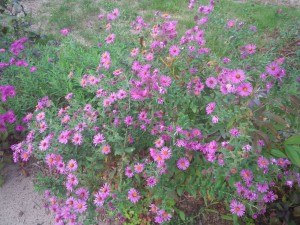 Not long ago, Scott Kunst, founder of heirloom bulb purveyor, Old House Gardens, wrote up his simple rules for gardening. Among the most notable were: “weeding is endless–learn to love it”; and “editing is more important than planting. “
Not long ago, Scott Kunst, founder of heirloom bulb purveyor, Old House Gardens, wrote up his simple rules for gardening. Among the most notable were: “weeding is endless–learn to love it”; and “editing is more important than planting. “
I may not love weeding, but most of the time I enjoy it and relish the neat and tidy results. The only thing that I don’t enjoy is the limited amount of time I have to spend weeding. The dandelions, chickweed, onion grass and lamb’s quarters are always ahead of me. If I were extremely paranoid, I would say that I sometimes hear them laughing at me. However, I am not that far gone…yet.
Editing is something that I have learned to value over time, and I think many gardeners are in the same boat.
When I started serious gardening, I had lots of ground to cover and wanted as many flowers as possible. I especially loved the big romantic performers like roses, lilies and peonies. My desire for big, beautiful plants was endless. Fortunately my pocketbook was limited. Still, I acquired as many flowering specimens, especially perennials, as I could. After a few years, I had enough to keep bouquets in my house throughout the growing season. After a few more years, I had so many plants that they were starting to crowd each other out.
How did this happen? Happy perennials multiply. One tradescantia can easily morph into thirty while you are looking the other way. Hostas and hellebores give birth. Lilies produce numerous offspring under cover of darkness and dirt. Yarrow produces bouncing baby yarrows. Even annuals and biennials, like foxgloves and columbines, set lots of seed, doubling or tripling their numbers every year.
In the beginning I dealt with this population explosion by increasing the size of my garden beds. By doing that and dividing the prolific perennials, I prevented riots among the plants. After awhile though, things reached the point where I had to either annex my neighbor’s property or edit my planting scheme.
My neighbor did not seem willing.
At first this felt like sacrilege. When you spend years trying to keep plants from dying, it takes a philosophical shift to bring yourself to the point where you can remove some plants and donate them to friends, relatives, or even the compost pile.
Rather than having an existential crisis, I started the editing process with the most prolific plant on my place—Aster ‘Alma Potschke’. ‘Alma’ is a tall, New England type aster with blooms in shades of pink. A few years ago taxonomists moved all the New England asters into a new genus, Symphyotrichum. This fazed me a bit, but did nothing to faze ‘Alma’, which continued to form clumps, spread seed and entice the local deer.
Those deer, whom I curse for dining on my rosebuds, crop the asters regularly. Instead of killing them off, deer depredation forces the plants to branch out, producing even more seed-bearing blooms. My garden looks like a pink haze in the fall, interrupted by the blue haze of the prolific Aster x frikartii ‘Monch’. This is glorious for a couple of weeks, but the garden is not all about the asters. Besides, if the truth be told, ‘Alma’ is rather leggy and uninspiring the rest of the growing season.
Over the years, ‘Alma’ has careened through the garden, inserting itself into patches of yarrow, overshadowing the rose bushes and even trying to muscle in on the tradescantia, which generally grows in the shady spots that a lady like ‘Alma’ should avoid.
I started the editing by removing the plants around the roses and in the midst of other plant groupings. I took out weak, spindly asters and thinned clumps. I decided where the asters looked best and eliminated them elsewhere. I also decided not to feel guilty. After all, editing ‘Alma Potschke’ is like getting a bold new haircut. If either decision turns out to be a mistake, the hair and/or asters will grow back.
So editing continues apace. After the daylilies bloom, some of them will hit the road as well. I have far too many ‘Black-Eyed Stella’, a prolific offspring of ‘Stella de Oro’. I think the woman who oversees the garden beds at my church will want at least some of them. I would rather have more ‘Hyperion’, a tall, lemon-scented daylily introduced in 1925. It doesn’t reproduce nearly as fast as ‘Black-Eyed Stella’, but I will use divisions from my big existing clump to fill a few of the holes left behind when ‘Stella’ departs.
Pruning is another form of editing and it scares some people nearly to death. I used to be that way, but the fast-and-furious flowering quince in the front yard converted me. If I don’t prune it, not only does it grow to behemoth size, but the sweet autumn clematis that scales its heights every year grows even more aggressively.
I will always buy a few new plants, but now the acquisition-to-editing ration has changed in favor of editing. The remaining plants will sigh with relief and I am quite sure that the local deer will still have plenty of ‘Alma Potschke’ to temporarily satisfy their insatiable appetites.
